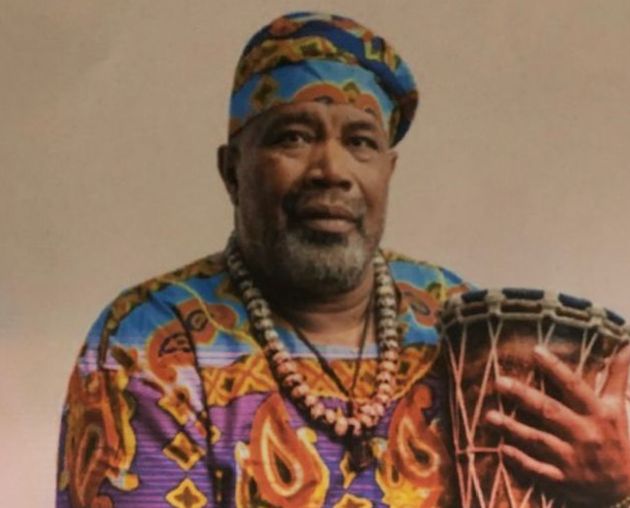The true scale of Covid deaths among Black and Asian Brits still isn’t known – because crucial data only goes back to July.
Figures showing the number of BAME (Black, Asian and minority ethnic) people who have died in English hospitals within 28 days testing positive give an incomplete picture, and even these were so hidden on an NHS website that the Office for National Statistics didn’t know about them when approached by HuffPost UK.
Campaigners say only death certificates can tell the full story – and the government still hasn’t added an “ethnicity” box to these despite being told to do so months ago.
“Tens of thousands of people are dying of coronavirus, of which a significant number will be BAME,” Sabby Dhalu, co-convenor for Stand Up To Racism told HuffPost UK.
“But there’s a lack of information out there, especially since the second wave.
“I think there’s a deliberate suppression of recent information about the disproportionate impact of coronavirus on BAME communities, unlike in the first wave.”
Experts and families who lost loved ones to Covid-19 spotted early on during the coronavirus outbreak that BAME people seemed harder hit by the virus, leading to urgent calls for an investigation.
Black people were found to be four times more likely to die from a coronavirus-related cause than white people, analysis by the Office for National Statistics (ONS) revealed in May.
This analysis was later updated in October to include deaths up to July 28, 2020, and found men and women of Black and south Asian ethnic backgrounds had increased risks of death involving coronavirus compared to those with white backgrounds.
Men from Black African backgrounds had the highest rate of death involving Covid-19 – 2.7 times higher than white men – while women from Black Caribbean ethnic backgrounds had a death rate twice as high as women from white backgrounds.

Ethnicity – unlike occupation, sex and age – is not currently recorded on death certificates. That means ONS specialists must link death certificates with the 2011 Census and NHS records, which can’t always be done, to produce data about race. It takes time, and has only been done up to the end of July so far.
The ONS is hoping to carry out further analysis using this method to find out the updated situation regarding BAME deaths in the next few months.
Making ethnicity mandatory on death certificates was one of the recommendations from the government’s Race Disparity Unit advisory group, which said it was “the only way of establishing a complete picture of the impact of the virus on ethnic minorities”.
This recommendation was accepted by the government. But three months on, the office told HuffPost UK changes to legislation and digital systems and processes were yet to be carried out, although work was “underway” and would be “completed in due course”.
This is not good enough, says Dhalu of Stand Up To Racism: “Meanwhile, people are dying every day. We need to know the breakdowns to see if BAME people are still being disproportionately affected and are being adequately protected.

“There is a real lack of knowledge and my personal belief is that the disproportionate impact on BAME people is down to institutionalised and structural racism and the government wants to control and suppress that.
“I think they are afraid this information will lead to another Black Lives Matter movement.”
The Department of Health and Social Care told HuffPost UK there was no recent evidence of differences in coronavirus death rates by ethnicity, but said there was evidence showing differences in incidence rates of the virus with BAME communities being affected at a higher rate.
It is basing that claim on English hospital data. Ethnicity is not recorded on NHS England’s daily or total coronavirus hospital death figures, but by some administrative quirk it does exist in the weekly updates.
The existence of these figures has come as a revelation to leading race campaigners and health experts, who told HuffPost UK they had no idea the data were being collated, describing it as “well hidden” and “not publicised”. Nor did the ONS know about them.
The Covid-19 deaths by ethnicity in hospitals in England figures up to January 6 2021 reveal a total of 53,730 people of all ethnicities within 28 days of testing positive for coronavirus.
Of these, 6,344 (12%) were of a BAME background and 240 (less than 1%) were of a mixed background.
There were also 4,592 deaths where ethnicity was either not stated or there wasn’t a match.
Dhalu believes the real BAME death figures will be even higher as these are just figures for hospital deaths.
“There will be a lot of BAME people who get Covid-19 who will be too scared to go into hospital,” she said.
“Everyone knows the scale of Covid deaths was higher in BAME communities during the first wave of the pandemic and there will be some BAME people thinking: ‘If Black doctors and nurses are dying of Covid, then what chance do I have?’
“There are also those who won’t go to hospital as they’ve heard they are overwhelmed and can’t cope.”
Dhalu also believes a change to the way coronavirus deaths are recorded over the summer will have had an impact on BAME figures. The data that include a breakdown of ethnicity only cover deaths within 28 days of a patient’s first positive swab.
Dhalu told HuffPost UK: “There will be people who contract Covid-19 and fight it for a long time before losing their battle. But they won’t be counted.
“The excess deaths figures calculated by the ONS show that the true death figures are much greater.”
Hesketh Benoit knows the personal heartache of the disproportionate impact coronavirus has on Black communities. In September, he told HuffPost UK how he had lost 37 friends to coronavirus – 36 of whom were Black.
This was despite him working extensively in the community and having a large and diverse group of friends from all backgrounds.

Benoit, 62, a retired lecturer, told HuffPost UK he had now lost 56 friends to coronavirus – around 90% of them being Black.
“I think a lot of it is to do with root causes such as poverty and inequality,” he said. “There were many inequalities even before coronavirus happened which should have been tackled.
“Ethnicity needs to be recorded on death certificates as a matter of urgency as we need this information to pinpoint inequalities. It will make working out statistics and seeing the disproportionate impact of Covid and other things a lot easier.”
Dr Habib Naqvi is director of the NHS Race and Health Observatory, launched in May to identify and tackle the specific health challenges facing people from BAME backgrounds.

“While the reports and research to date highlight some of the reasons why BAME people are more likely to get coronavirus – such as occupational exposure, living in multiple households and pre-existing health conditions such as diabetes and cardiovascular conditions – they don’t explain the excess risk among all groups and give a full picture,” he said.
He suggests “looking at more deep rooted issues such as why BAME people are more likely to be in poorer housing and lower paid but frontline jobs and discrimination in society as a whole”.
Addressing the need for ethnicity to be recorded on death certificates, he added: “In the NHS, what does not get measured does not get done. So it is really important to have good, robust and accurate data.
“It is absolutely critical for us to have this to be able to reduce and tackle the health inequalities we see for our diverse communities.”
Equalities minister Kemi Badenoch declined to be interviewed about the progress in addressing Covid-19 health inequalities.
However, an “equality hub” spokesperson from the Equalities Office said an update on the cross-government work Badenoch was leading to address the disproportionate impact of Covid on minority groups would be “delivered in due course”.
“Throughout the Covid-19 pandemic, we have prioritised protecting the most vulnerable in our society,” they claimed.
“The minister for equalities is committed to providing quarterly updates on this work to the public.
“On October 22, the minister provided her first quarterly update on the work we have carried out so far which highlights and seeks to minimise the key risk factors that are having an impact on these communities.
“Access to the latest public health information and protections should be available to everyone.
“To ensure that is the case, we have invested in a strong package of measures to target messaging, develop the data we have available and make sure everyone is as safe as possible.”